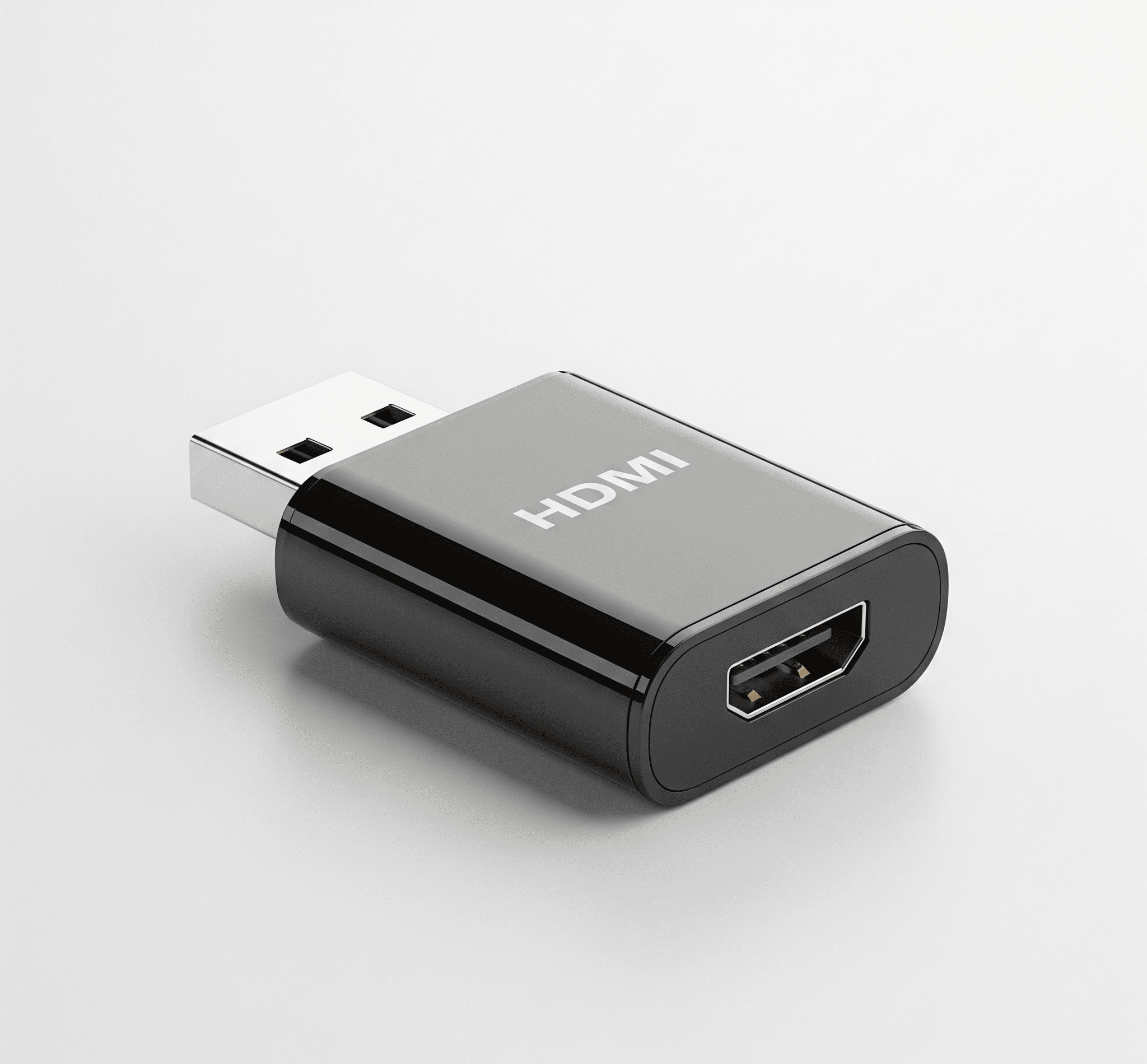Kingsgrove Branch:
USB to HDMI

USB to HDMI, a game-changer in connectivity, lets you effortlessly stream visuals from your devices to larger screens. Imagine seamlessly connecting your laptop to your TV for a cinematic viewing experience, or mirroring your tablet's content on a projector. This guide explores the versatile world of USB to HDMI adapters, covering everything from technical specifications to practical applications
We'll delve into the different types of USB to HDMI adapters, examining their strengths and weaknesses. We'll also explore compatibility issues and troubleshooting steps, plus offer a comprehensive product selection guide. Whether you're a tech enthusiast or just looking for a convenient video output solution, this guide has got you covered. Prepare to unlock a world of visual possibilities
USB to HDMI Adapters: A Comprehensive Guide
USB to HDMI adapters are a handy way to connect devices with USB outputs to displays that use HDMI inputs. They're incredibly versatile, making it easy to share content from laptops, cameras, and other devices on TVs or monitors. This guide will walk you through everything you need to know about these adapters, from the basics to future trends
Introduction to USB to HDMI Adapters
A USB to HDMI adapter bridges the gap between devices that use USB for video output and displays that use HDMI. This allows you to extend the functionality of your USB-enabled devices, such as laptops or cameras, to a larger screen. Different types of USB ports exist, and this affects compatibility
- USB-C to HDMI: This is a common and versatile type, often found on modern laptops and other devices
- USB-A to HDMI: This older standard is less common on newer devices, but can still be useful for older USB-A equipped devices
- Other variations: There might be other less common variations depending on the specific hardware. Always check compatibility before purchase
Common use cases include:
- Connecting laptops to TVs: Enjoy presentations or movies on a bigger screen
- Displaying camera footage: Review and share your photos or videos on a monitor
- Connecting game consoles: While less common, some consoles support USB output for streaming purposes
- Sharing presentations: Ideal for presenting your work to a larger audience
| USB Port Type | HDMI Compatibility | Pros | Cons |
| USB-C | Generally excellent | Widely available, often high-quality | May require specific cables/adapters |
| USB-A | Can be compatible but less common | Cost-effective | Lower bandwidth, potential compatibility issues |
| USB-mini/micro | Rarely used for HDMI output | Very limited availability for HDMI | Not a practical option |
Technical Specifications and Features
Understanding the technical aspects is key to choosing the right adapter. Bandwidth limitations can restrict the resolution and frame rate you can achieve. Higher bandwidth ports can handle more detailed video
- Bandwidth limitations: Different USB ports have varying bandwidth capacities, which influences the video quality
- Supported resolutions: Adapters support different resolutions and frame rates. Always check the specifications before purchase
- Power requirements: Some adapters might require extra power from the USB port, which may not be available on some devices
Schnap.com.au offers a variety of adapters with different specifications, enabling you to find the one that meets your needs
Compatibility and Connection
Compatibility issues can arise when connecting devices with different USB ports. Always double-check the compatibility before purchase
- Compatibility issues: Ensure the USB device and HDMI output device are compatible. Check the specs
- Troubleshooting connection problems: Check cables, try different ports, and ensure the adapter is correctly seated
- Connecting steps: Refer to the specific product documentation from schnap.com.au for detailed connection instructions
- Compatible USB devices: Consult the specifications of the specific HDMI output device from schnap.com.au to see which USB devices are compatible
| USB Device | HDMI Output Device | Compatibility |
| Laptop with USB-C | Most modern TVs/Monitors | Generally Compatible |
| Older laptop with USB-A | Specific TVs/Monitors | Potentially compatible, check specifications |
Practical Applications and Examples
Connecting a laptop to a TV is a common use case. This allows for a larger screen for presentations, movies, or games
- Laptop to TV connection: Connect the USB to HDMI adapter to your laptop and the HDMI end to your TV. Follow on-screen prompts
- Selecting the right adapter: Consider the resolution and bandwidth requirements of your devices
- Industry applications: Used in various industries for presentations, data visualization, and sharing video content
- Connecting to a video camera: Connect the adapter to your video camera to display its output on a monitor
Advantages and Disadvantages
USB to HDMI adapters offer significant benefits.
- Advantages: Portability, ease of use, and compatibility with various devices
- Disadvantages: Potential bandwidth limitations, power requirements, and compatibility issues
- Comparison with other methods: Consider other output methods like dedicated video ports or wireless solutions, based on your needs
Future Trends and Developments
Future USB and HDMI technologies may lead to improved performance and power efficiency in adapters.
- Future technologies: Improved bandwidth and power efficiency in USB and HDMI standards
- Impact on the market: Advancements in video output standards may affect adapter designs
Product Selection Guide (Schnap.com.au), Usb to hdmi
Schnap.com.au offers a range of USB to HDMI adapters. Choose the right adapter based on your needs
- Product comparison: Compare different adapters on schnap.com.au based on specifications and pricing
- Pricing table: Refer to the schnap.com.au website for the latest pricing information
- Selection criteria: Consider resolution, bandwidth, and power requirements when choosing an adapter
- Benefits of purchasing from schnap.com.au: Research and compare products from various vendors before making a purchase
| Product Name | Price | Features | Specifications |
| Example Adapter 1 | $XX | High resolution support | USB-C to HDMI, 4K |
| Example Adapter 2 | $YY | Compact design | USB-A to HDMI, 1080p |
Final Review: Usb To Hdmi
In conclusion, USB to HDMI adapters offer a flexible and often affordable way to expand your visual output options. From simple laptop-to-TV connections to complex professional setups, these adapters have proven their worth. Choosing the right adapter depends on your specific needs and budget, and our guide will equip you with the knowledge to make the perfect selection, see RCA to HDMI
Unlock the power of your digital world with a seamless visual connection. See you on the next adventure
User Queries
What are the common compatibility issues when using a USB to HDMI adapter?
Compatibility issues often arise due to differing USB port types (USB-A, USB-C) and the specific HDMI output device. Sometimes, the USB port on your device might not provide enough power for the adapter, causing issues with video output or causing the device to shut down. Other times, the adapter might not support the resolution or refresh rate your device is trying to output
Double-checking specifications and seeking device-specific information are key to troubleshooting
How do I choose the right USB to HDMI adapter for my needs?
Consider your source device (laptop, phone, etc.) and the destination device (TV, monitor). Check the USB port type and the resolution and refresh rate supported by both. If you need higher resolutions, choose an adapter that supports them. A higher bandwidth adapter is often necessary for demanding applications
Can I use a USB to HDMI adapter with any USB device?
Not all USB devices are compatible with every USB to HDMI adapter. Consider the specific USB port type (USB-A, USB-C) on your device and the supported resolution/refresh rate capabilities of the adapter
What are the potential performance limitations of using a USB to HDMI adapter?
Bandwidth limitations can sometimes limit the resolution and refresh rate supported. Power requirements can also be a factor, as some adapters require more power than others, especially for higher resolutions. Finally, the quality of the cable and the overall setup can also affect performance
Recent posts

Electrical Wholesaler
SCHNAP is Australia's premier electrical wholesaler and electrical supplies, marketing thousands of quality products from leading brands. Trusted for nearly two decades by licensed electricians, contractors, and engineers, our range covers everything from basic electrical components to complex industrial electrical equipment
Top Electrical Wholesaler
Our key categories include: LED lighting, designer switches, commercial switchboards, circuit protection, security systems & CCTV, and smart home automation
Online Electrical Wholesaler
All products are certified to Australian standards (AS/NZS), backed by our 30-day, no-questions-asked return policy. Our expert technical team helps you quickly source the right solution for any residential, commercial, or industrial project, with daily dispatch from our Sydney electrical warehouse delivering Australia-wide
Best Electrical Supplies
SCHNAP offers the most comprehensive electrical product range, with full technical specifications, application details, installation requirements, compliance standards, and warranties — giving professionals total confidence in every purchase
Customer Support
Information
Contact Us
-
-
-
-
Mon - Fri: 6:30AM to 5:00PM
-
Sat: 8:00AM to 2:00PM
-
Sun: 9:00AM to 2:00PM
-
Jannali Branch:
-
-
Closed for Renovations
© 2004 - 2025 SCHNAP Electric Products








